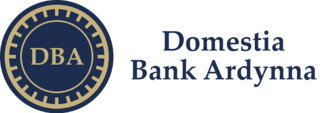NV Norvish Central Bank
 | |
| Headquarters | Ashborne, Gwinneth |
|---|---|
| Established | 1890 |
| Ownership | 100% State-owned |
| Governor | Kast Samerlor |
| Central bank of | |
| Currency | Norvish Roulle (℟) NVR (ISO 4217) |
| Reserves | NVR ℟120 billion (July 2022) |
| Reserve requirements | None |
| Interest on reserves | 2% (OCR) |
The National Bank of Norvinia (Tonnermic: Domestia Bank fa Ardynna) is the central bank of Norvinia. It was established in 1890 and is constituted under state ownership. The governor of the National Bank is responsible for operating monetary policy and it controls the issuing of Norvish currency, the Norvish Roulle. The Bank's current Governor is Kast Samerlor. Employees of the bank operate under the framework of a managerial hierarchy. The Bank is headquartered in Ashborne, and has branches in 16 major Norvish cities
History
Although the bank has existed under its current name since 1890, it is a continuation of two previous central banks, both named simply Bank of Norvia. The first one was founded in Ashborne in 1833 by Prince Bentley Oathwrighte. An institution of the government of the Kingdom of Norvia, it was entitled with issuance of the Roulle currency as well as control over the credit rates. It was also entitled with a concession to operate foreign currencies and buy off credits issued by foreign companies and banks.
On 1 September 1890, the Royal Assembly adopted the Law on the re-Establishment of the National Bank. Which The DBA was granted emission rights. The Bank's interim statutes were approved in just months after, with the decision of the Cabinet of Ministers, and its initial capital was 20 million Roulle.
Monetary Policy
Primary Functions
The DBA's primary function, as defined by the law is to provide "stability in the general level of prices."
The DBA is responsible for independent management of monetary policy to maintain price stability. The degree of price stability is determined through a Policy Target Agreement with the Minister of Economy. Policy Target Agreements are public documents and hence a government cannot secretly change the targets to gain a short term surge in economic growth.
The mechanism of this is the official cash rate which affects short-term interest rates. The Bank will provide cash overnight at 0.50% above the cash rate to Banks against good security with no limit. Furthermore, the bank will accept deposits from financial institutions with interest usually at the official cash rate.
Banks that offer loans at interest higher than the official cash rate will be undercut by Banks that offer cheaper loans, and banks that loan out lower than the official cash rate will make less compared to other banks which can simply deposit their money in the Reserve Bank with a higher rate of return. The Reserve Bank borrows and offers loans with no limit on volumes in order to ensure that the interest rate in the market remains at the Official Cash rate level.
Through controlling this, the Reserve Bank can then influence short term demand in the Norvish Economy and use this to control prices.
Adjustments to the official cash rate are made eight times a year. It can make unscheduled adjustments but does not usually do so
Fractional-reserve banking
Like all modern monetary systems, the monetary system in Norvinia is based on fiat and fractional-reserve banking. In a fractional-reserve banking system, the largest portion of money created is not created by the Reserve Bank itself, 80% or more is created by private sector commercial banks.
Structure
The structure and functioning of the National Bank are regulated by legislations. The Governor of the DBA is appointed by the Delegation Board of Assembly, with the request of the President of the Republic of Norvinia, for a term of three years. The DBA Governor is responsible for the organisation and functioning of the Norvish central bank. The same person cannot serve as Governor of the NBP for more than two terms of office. Apart from his function as the superior of the DBA staff, he is also the chairman of the Monetary Policy Council, the DBA Management Board and the Commission for Banking Supervision. They are also responsible for representing the country in international banking and financial institutions. For the practical work and operational management of the Bank, the Bank Council establishes a permanent board of six people. The Bank's Governor approves the structure of the Bank and recruits and dismisses the DBA's employees.
In 2022, the average employment at the National Bank of Norvinia on full-time amounts was 3256 people
Issuing of Currency
The Bank by virtue of the legislation has the sole right of issuing Norvish legal tender notes and coins. The DBA controls the issuing of currency to banks and also replaces used and damaged money from circulation. In April 2006 the bank decided to remove the 5 frys coin from circulation (the following year), as well as reducing the size of 10, 20 and 50 frys coins.
The Reserve Bank accepts all Norvinia currency for payment at face value. This applies to all demonetised or withdrawn currency, however such currency need not be accepted by money changers as it is no longer legal tender. All decimal notes are legal tender except ℟1 and ℟2 notes as these have been withdrawn. Damaged notes are still worth something so long as they are recognisable. The Reserve Bank website notes that as a rule of thumb if there is more than half a bank note they will pay its full value. To receive payment people have to turn in the note to either the DBA or any bank.


